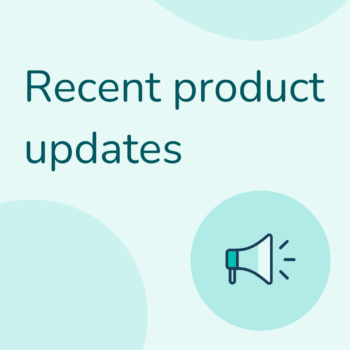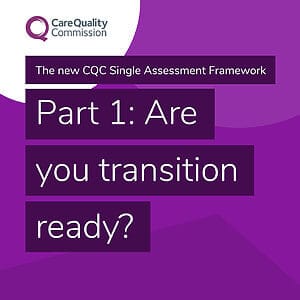15th October 2024, marks an important moment as the industry reflects on the review and recommendations that follow the initial assessment of Care Quality Commission’s (CQC) role as the health and social care regulator for England. Professor Sir Mike Richards’ report, ‘Review of CQC’s single assessment framework and its implementation’, commissioned by the board of the CQC, aims to complement the insightful review by Dr Penny Dash. It thoughtfully examines the changes made by CQC since the launch of its new strategy in 2021 and considers their impact. Most importantly, this review offers recommendations aimed at addressing CQC’s current challenges, with the hope of fostering improvement and better outcomes for all.
Findings
There are three elements which are the backbone of the 2012 strategy to transform CQC:
- An organisational restructure that supports individual parts of the sector
- The implementation of a unified assessment framework across all sectors
- The creation of a new IT system that meets specific requirements for services across all sectors
These strategic initiatives are clearly interconnected, however, the review has revealed that, to date, there have been shortcomings in implementing the new working methods as intended. This has resulted in unease and a widespread lack of confidence in the regulator’s ability to guarantee that services remain safe for those who access them.
Main objectives not being met!
One does wonder about effective collaboration between stakeholders, as the recent structural reorganisation has led to a clear distinction between the teams responsible for formulating regulatory policy and strategy and those tasked with operational delivery.
CQC has struggled to meet its main objective of ensuring that health and care services deliver safe, effective, and high-quality care while promoting improvements. In addition, inspections conducted have significantly decreased and there are delays in publishing inspection reports. Worryingly, service providers have raised serious concerns regarding the inspection process and the quality of the reports.
Providers in health and social care acknowledge the autonomy of the regulator, however, they express concerns that the previous collaborative relationship with the CQC have diminished somewhat. This partnership was essential for developing effective quality assessment strategies.
Grave staffing issues
It is noteworthy that the recognition of staff frustration has finally come to light. Staff members engaged in inspections are facing demoralisation, primarily due to their perception that senior leadership have been ignoring their concerns regarding the changes.
Staff morale is currently low, particularly among the inspection teams, as highlighted by the findings of the latest staff survey. In recent years, there has been a noticeable increase in sickness levels, especially within these teams. Additionally, the current staffing levels in the inspection units are inadequate, hindering their ability to fulfil regulatory responsibilities within acceptable timeframes. Staff members express concerns about their capacity to address emerging risks promptly.
Furthermore, it’s acknowledged that new employees have not received sufficient induction and training, which exacerbates these issues. This has led to a notable exodus of staff from the organisation, further complicating issues related to assessments, inspections, and enforcement. Nevertheless, the report reveals that many of the remaining staff are still dedicated to the mission of the CQC and are eager to witness improvements.
The Single Assessment Framework
The Single Assessment Framework, while having some positive elements derived from the previous assessment approach, is reported to be far too complex, although it incorporates some beneficial aspects from the previous assessment approach. As it stands, it fails to accommodate the significant variations in size, complexity, and the diverse functions of the services regulated by the CQC. The notion that one size fits all is simply not applicable here. Certain elements of the quality statements are leading to confusion for both CQC inspectors and service providers. Moreover, the categories of evidence and scoring systems are resulting in substantial delays in the report writing process.
Progress in utilising data for evaluating hospital services has been limited in recent years, with the intelligence available to inspection teams being less effective than before the pandemic. This decline negatively affects the assessment of outcomes for service users. Additionally, the consistency of judgments and the adequacy of evidence, crucial for effective regulation, has suffered due to the weakening of quality assurance processes.
Summary of key recommendations
The primary recommendations involve implementing a complete reset and reverting to previous methods of operation
Organisational structure
The CQC needs a fundamental reset, similar to the one in 2012/13 following issues revealed by public inquiries, including:
- Reinstating the previous organisational structure with sector-based inspection teams led by Chief Inspectors
- Disbanding the current operations directorate and reforming it into sector-based inspection directorates
- Appointing at least 3 permanent Chief Inspectors to lead sector-based directorates, with consideration for a 4th to oversee mental health services
Inspection approach
- Reinstate and strengthen the continuous relationships between inspection personnel and service providers
- Retain aspects of the single assessment framework with modifications
- Suspend and potentially eliminate evidence categories along with their corresponding scoring systems
- Define clearer standards for what constitutes good service in different sectors
Data and technology
- Make data-driven decisions to guide your judgments effectively
- Incorporate existing datasets from NHS England and other bodies into assessments
- Establish new data sharing agreements between national bodies
Staffing and resources
- It is imperative to conduct an urgent review of staffing levels and pay scales within the inspection directorates
- Address the gap between NHS and CQC pay scales to retain inspection staff
- Reassess inspection priorities given current staffing levels
Collaboration and ratings
- Collaborate closely with leaders in healthcare and adult social care to enhance assessment methodologies
- Reintroduce a larger element of peer review in the inspection process
- Assess the effectiveness of “one-word ratings” and analyse the levels at which these ratings hold the most significance for service users
Integration and sector focus
- To ensure effective collaboration among sector inspection teams, it is essential to establish dual responsibilities for integration at the local level. This approach will foster better communication and coordination, enhancing overall operational efficiency
- Address the concerns regarding the Care Quality Commission’s (CQC) capacity to evaluate integrated care efficiently within the existing sector-based framework
Implications for home care providers
The recommendations outlined above aim to boost the operational efficiency of the CQC, enhance its ability to assess integrated care, and more effectively address the needs of both providers and service users.
In my view, the recommendations presented are entirely sensible, and it is essential to tackle the significant issues raised in Sir Mike Richards’ report, ‘Review of CQC’s single assessment framework and its implementation’.
However, it is vital to maintain perspective, especially for smaller services. According to CareLineLive’s recent State of Homecare Survey, 64% of respondents indicated that regulators across the UK, including the CQC, have played a crucial role in enhancing standards within the sector.
To learn more about CQC and the Single Assessment Framework, there’s a wealth of information at carelinelive.com




